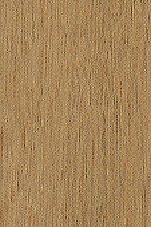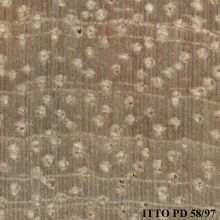
MEDANG (Endiandra laxiflora)
Trade Name
Medang
Scientific Name
Endiandra laxiflora Merr.
Family
Lauraceae
Common Names
Usuang-saha (Philippines)
Description Of The Tree
Botanical Description
It is an evergreen, small to medium-sized trees up to 35 m tall. The bole is often quite straight, branchless for up to 25 m, up to 70 cm in diameter, sometimes with buttresses up to 4 m high.
Natural Habitat
Endiandra laxiflora is found in primary and sometimes in secondary rain forests up to 1,200 meters of altitude.
Wood Identification
Anatomic Description Of Wood
Tyloses sclerotic. Tyloses common. Vessels per mm2 5 to 20. Vessel-ray pits reticulate and/or foraminate. Simple perforation plates. Intervessel pits medium, 7 to 10 micras. Apotracheal axial parenchyma diffuse and/or diffuse in aggregates. Paratracheal axial parenchyma scanty and/or vasicentric. Axial parenchyma aliform. Axial parenchyma confluent. Axial parenchyma in narrow bands on lines up to 3 cells wide. Silica bodies in the ray cells. Body ray cells procumbent with one row of upright and/or square marginal cells (Kribs-III). Fibers with distinctly bordered pits.
-
 Wood Macro Photo Radial Plane
Wood Macro Photo Radial Plane
-
 Wood Micro Photo Of Transversal Section
Wood Micro Photo Of Transversal Section
Availability
Cites Status
Unrestricted
General Wood Description
Odor
The wood has usually a fruity odor.
Color
The heartwood is brown or pale red brown, occasionally orange with pink streaks. It is not differentiated from the sapwood.
COLOR INDEX (1=Black, 7=Light yellow,white)
2
Grain
This species is reported to have straight to slightly interlocked grain.
Texture
The texture of the wood varies from moderately fine to moderately coarse.
Natural Durability
This species is considered as moderately durable.
Natural durability index (1= Very high durability, 7=Vey low durability)
3
Silica Content
Silica Content: This timber is reported to have silica. Silica contents over 0.05% may affect wood processing. Silica Value: 0
Resistance To Impregnation
The heartwood is impermeable, but the sapwood is reportedly permeable to preservative treatments.
Wood Physical Properties
Basic Density or Specific Gravity (O.D. weight/vol. green) (g/cm³)
0.57
Air-dry Density (Weight and volume at 12%MC) (g/cm³)
0.63
Total shrinkage Tangential (Saturated to 0%MC) (%)
9.0
Total shrinkage Radial (Saturated to 0%MC) (%)
5.1
Drying Defects
Ease of Drying: Air seasoning is reported to be slow. Drying Defects: This species is prone to checking and with a slight risk of degrade, mainly cupping.
Dimensional stability ratio (Total Tangential Shrinkage %/Total Radial Shrinkage %)
1.8
Wood Chemical Properties
Wood Mechanical Properties
Bending Strength (MOR),12%MC (kgf/cm²)
758
Compression parallel to fiber 12%MC (kgf/cm²)
272
Compression perpendicular to fiber 12%MC (kgf/cm²)
56
Shear strength radial 12%MC (kgf/cm²)
101
Janka hardness (side) 12%MC (kgf)
437
Janka hardness (end grain) 12%MC (kgf)
491
Workability
Blunting Effect
The wood has a moderate blunting effect.
Machining
It is easy to work provided cutting edges are kept sharp.
Turning
30
REFERENCED USES
End Uses Summary
HOUSING GENERAL, beams, flooring, frames, panelling, FURNITURE AND CABINETS, cabinets, PLYWOOD AND VENEER, TURNING, OTHER AND MUSICAL INSTRUMENTS, moldings
General Housing
- 10 - Silica in Timbers
Beams
- 11 - Prospect: The wood database
Flooring
- 14 - Handbook of Hardwoods
Frames
- 16 - Woods of the World
Paneling
- 18 - W3TROPICOS Missouri Botanical Garden
Furniture Cabinets
- 21 - Tropical timbers of the world. Part III-Southeast Asian and Oceanian Species.
Cabinet
- 24 - Empire Timbers
Panels, Veneers
- 25 - Directory of Timber Trade Malaysia
Turning
- 30 - Embassy of Honduras in Japan
Molding
- 79 - Padronização da Nomenclatura Comercial Brasileira das Madeiras Tropicais Amazônicas, Sugestão
Please Provide Information To View Producer Information